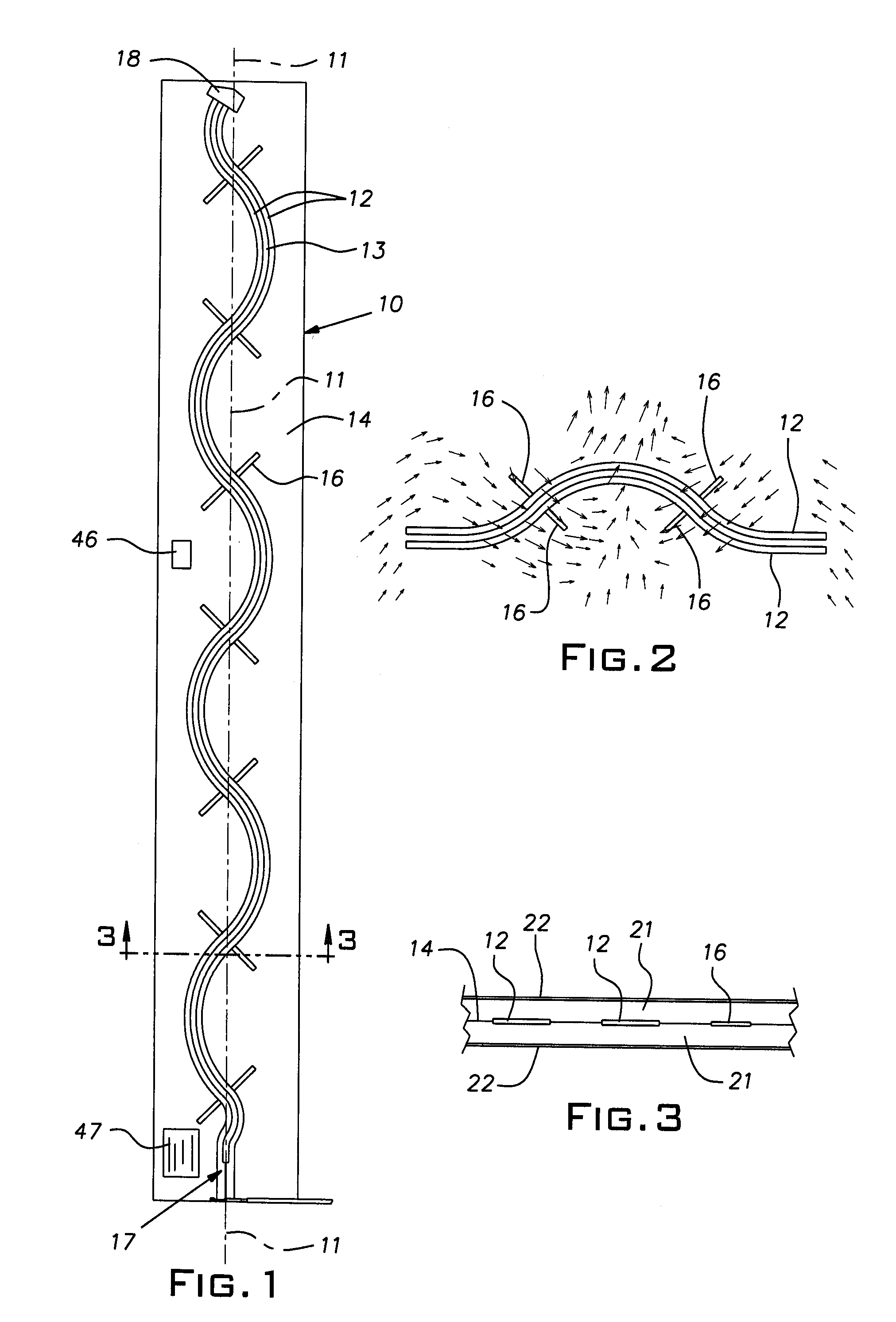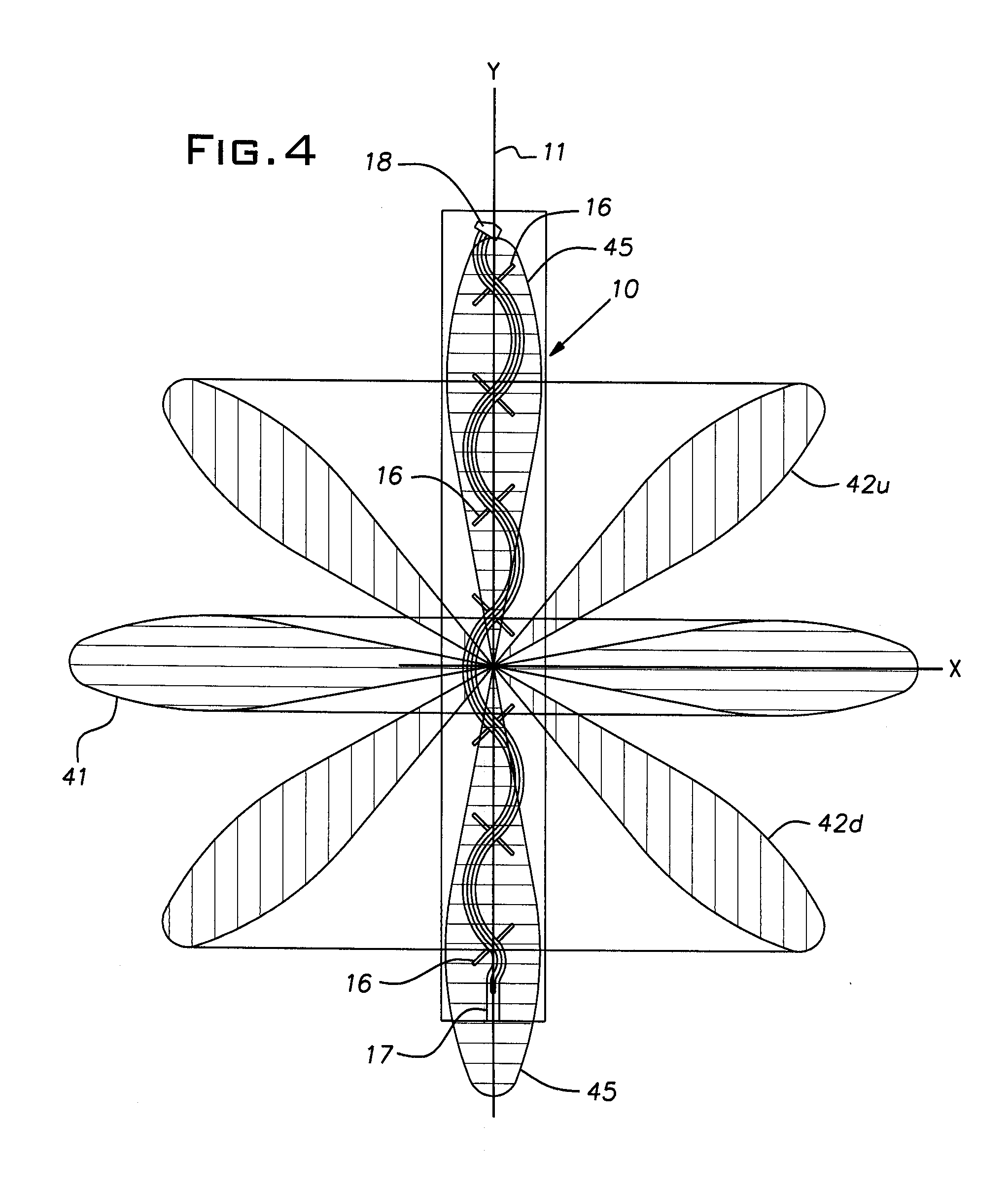Elongated twin feed line RFID antenna with distributed radiation perturbations
a radiation perturbation and feed line technology, applied in the field of antennas, can solve the problems of antenna being unobtrusive when installed, adversely affecting the ability of rfid antennas to reliably read rfid tags, etc., and achieves the effects of reliable tag reading, uniform signal strength, and favorable polarization pattern
- Summary
- Abstract
- Description
- Claims
- Application Information
AI Technical Summary
Benefits of technology
Problems solved by technology
Method used
Image
Examples
Embodiment Construction
[0024]FIG. 1 illustrates a preferred form of an RFID antenna 10. The antenna is elongated along a longitudinal axis 11. The antenna 10 includes a pair of coplanar twin ribbon-like conductors or strips 12 having a gap or space 13 therebetween. The conductors 12, also referred to herein as feed lines, are made of copper or aluminum, for example, and can be relatively thin self-supporting foil or can be printed, deposited, or otherwise fabricated on a thin carrier film 14 of suitable dielectric material such as Mylar®, or etched from a printed circuit board.
[0025]Preferably at uniformly spaced locations along the length of the antenna 10 are pairs of stubs (i.e. dipoles) or branch radiators 16, each stub of a pair being in electrical continuity with an associated one of the conductors or feed lines 12. The stubs 16 are conveniently formed conductors such as the same material used for the feed lines 12, are coplanar with the feed lines, and are integrally formed with these lines so as t...
PUM
 Login to View More
Login to View More Abstract
Description
Claims
Application Information
 Login to View More
Login to View More - R&D
- Intellectual Property
- Life Sciences
- Materials
- Tech Scout
- Unparalleled Data Quality
- Higher Quality Content
- 60% Fewer Hallucinations
Browse by: Latest US Patents, China's latest patents, Technical Efficacy Thesaurus, Application Domain, Technology Topic, Popular Technical Reports.
© 2025 PatSnap. All rights reserved.Legal|Privacy policy|Modern Slavery Act Transparency Statement|Sitemap|About US| Contact US: help@patsnap.com



